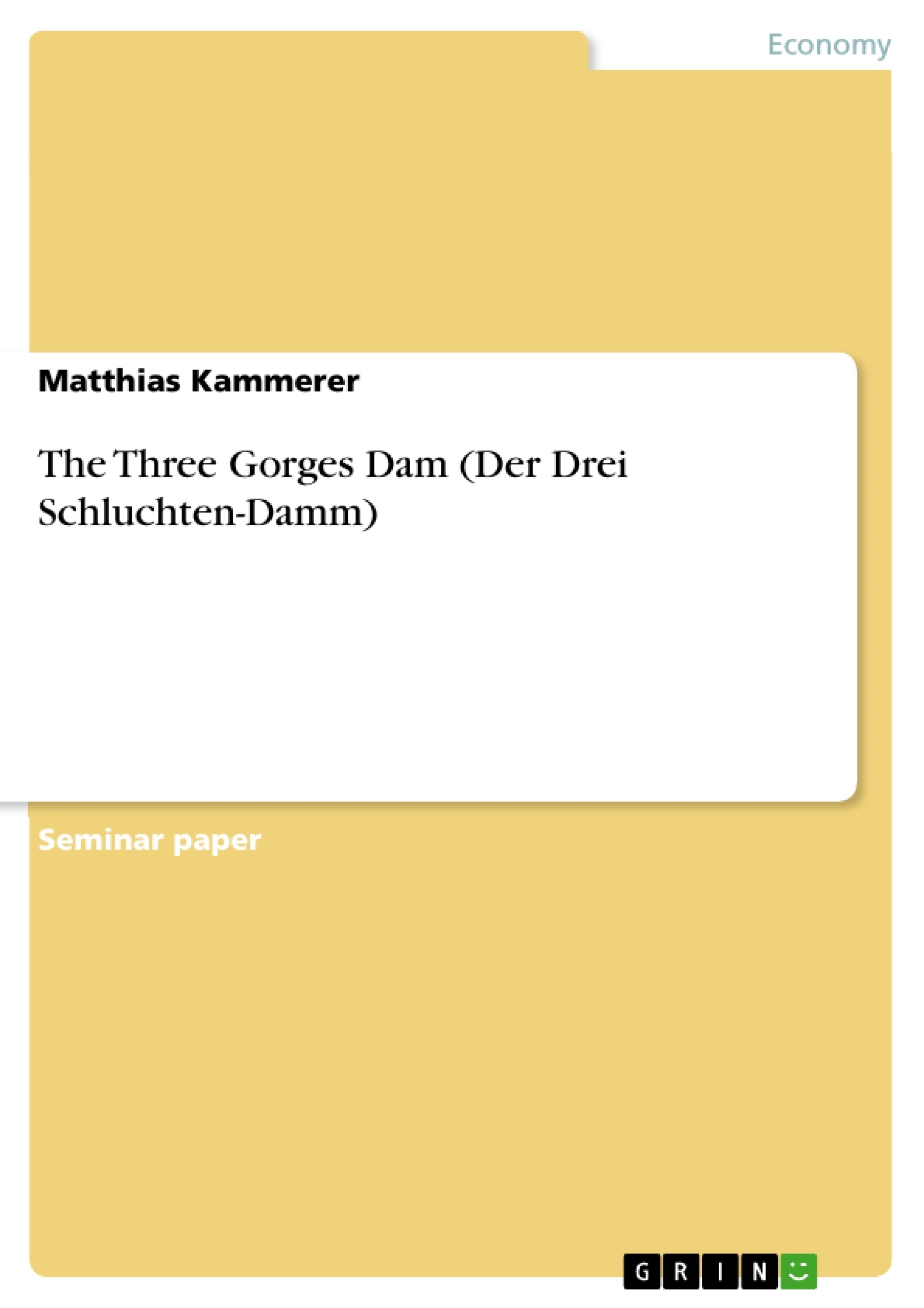The Three Gorges Dam, one of the largest engineering projects in the history of mankind, is on the brink of completion. The construction started in 1994 and once completed in 2009, it will be the world’s largest men-made reservoir with a capacity of nearly 40 billion m3 and a length of 663km, and will finally submerge an area of 1040km2.
(Miller et al.2005; Yong n.d.)
The dam is located in Hubei province on the Yangtze, China’s longest river and the third longest river worldwide. (International Rivers Network 2004)
Sun Yat-sen first proposed the idea of this hydroelectric dam in 1919, but due to war, civil war and revolution the plan was shelved. Mao revived the thought in the mid 50s because of major floods, but the chaos of the Cultural Revolution buried it again until the economic reforms in the 70s and 80s underlined the urgent need for electricity for the rapidly growing country. (Reference.com 2006; Wikipedia n.d.; Kennedy 2001; Starr 2001) Premier Li Peng finally pushed it through the rubber-stamping National People’s Congress in 1992, but the project was so highly controversial, that a level of opposition occurred that was unprecedented before.
(166 delegates voted against the project, nearly one third abstained). (Starr 2001; Gamer 2003; Cannon 2000) At the moment, as the dam nears completion, the dispute between supporters and opponents continues within China as well as overseas.
In my essay, I want to bring forward the main arguments whether the Three Gorges Dam is a good thing for China or not.
In the following section I will highlight the multiple benefits of this project.
Subsequently, after going into detail concerning its disadvantages, I will finally survey if a single statement is possible and appropriate whether or not this project is favourable.
Inhaltsverzeichnis (Table of Contents)
- Preface
- Benefits of the Three Gorges Dam
- Hydro-electric Power Generation
- Flood Control
- Navigation
- Prestige Project
- Regional Economic Development
- Climate Change
- Water Shortages
- Drawbacks of the Three Gorges Dam
- Reservoir Siltation
- Resettlement
- Costs
- Conclusion
- Referencing List and Bibliography
Zielsetzung und Themenschwerpunkte (Objectives and Key Themes)
The objective of this essay is to analyze the potential benefits and drawbacks of the Three Gorges Dam project for China. The essay explores the main arguments in favor of the project, highlighting its economic, environmental, and social impacts. It also discusses the project's critics and their concerns about the dam's costs, environmental effects, and social displacement.
- Economic Growth and Development
- Energy Production and Environmental Impacts
- Flood Control and Water Management
- Social and Economic Displacement
- Political and National Identity
Zusammenfassung der Kapitel (Chapter Summaries)
The essay begins with a preface, outlining the historical context of the Three Gorges Dam project and its significance in China's development.
The second chapter delves into the multiple benefits of the dam project, focusing on its contribution to hydro-electric power generation, flood control, navigation, national pride, and regional economic development. The chapter also explores the potential effects of climate change caused by the dam, emphasizing the positive impact on agriculture.
The third chapter examines the drawbacks of the dam project, including the problems of reservoir siltation, resettlement, and excessive costs. This chapter analyzes the ethical and economic implications of the dam's impact on the local population and the environment.
Schlüsselwörter (Keywords)
The primary keywords and focus topics of this essay include the Three Gorges Dam, China, economic development, energy production, environmental impacts, flood control, water management, resettlement, social displacement, national pride, and political economy.
- Quote paper
- Matthias Kammerer (Author), 2005, The Three Gorges Dam (Der Drei Schluchten-Damm), Munich, GRIN Verlag, https://www.grin.com/document/83239




